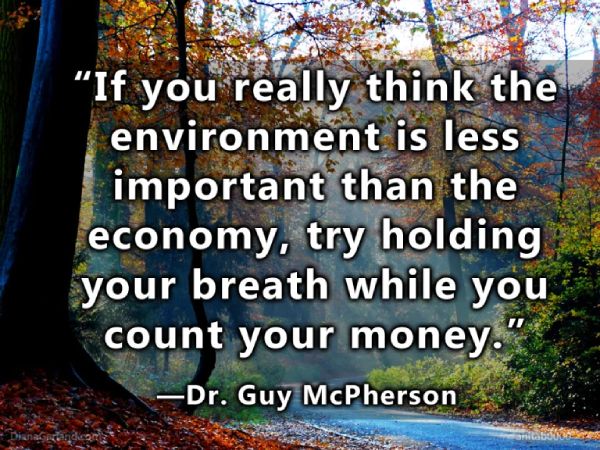Image: Dodo bird, Wikimedia Commons CC0
WESTCHESTER COUNTY New York—(Weekly Hubris)—June 2019—Humans are animals, although hubris occasionally allows us to forget this fact. As a result of our membership in the animal kingdom, we require habitat to survive, as I have mentioned in my earlier writings for Weekly Hubris.
Our membership in the animal kingdom comes with the ability to predict that loss of habitat will cause the near-term functional extinction of our species, as with other animals. In other words, loss of habitat makes us functionally extinct. Shortly thereafter, and to my great sadness, our species will disappear from this most glorious of planets.
The rate of environmental change is tremendously important as we seek to understand loss of habitat and, therefore, functional extinction. The ongoing, accelerating rate of environmental change at the planetary level points to our untimely demise in the near future.
In this short essay, I point out seven phenomena that have us headed toward the planetary exit in the near future. There are more than seven paths pointing toward our imminent demise, and any one of them will be followed shortly thereafter by extinction.
Contrary to personal opinions, the so-called “elite” among us do not have the ability to survive in bunkers for the several million years that will be required to persist beyond the end of the Sixth Mass Extinction.
That I do not understand the point of attempting to persist on a lifeless planet reflects my love of life.
Earth is currently experiencing the highest global-average temperature with Homo sapiens present, as I pointed out in my March essay in this space. As I noted two years before that, we are fortunate to be alive at this time in history. As Homer remarked in the Illiad, any moment might be our last. This essay points out the various means by which our species can take an early off-ramp from the freeway of life.
The first of the seven means by which we could lose habitat was reported by Dr. Natalia Shakhova and colleagues at the European Geophysical Union meeting in 2008: a burst of methane from beneath the Arctic Ocean. They reported the “up to 50 Gt . . . hydrate storage as highly possible for abrupt release at any time.” Note that they did not indicate that an ice-free Arctic was required for such a release of methane.
Methane is more than 100 times more powerful than carbon dioxide as a greenhouse gas, and the abrupt release of even half the 50 Gt concluded upon by Shakhova and colleagues would cause loss of habitat for humans within a matter of months.
The relatively shallow seabed of the Arctic Ocean is not the only source of methane on our fragile planet. This potent greenhouse gas is also being released at exceptionally high levels from terrestrial permafrost in the Arctic region. The abrupt release of methane from at least these two sources is contributing to an exponential rise in atmospheric methane.
Industrial activity will continue to drive up temperatures as a result of increased greenhouse gases in the atmosphere. The current levels of atmospheric carbon dioxide (more than 400 ppm) and methane (more than 1,500 ppb) assure planetary disaster awaits in the relatively near future. These are two of more than 40 greenhouse gases. Long after we have been warned about the consequences of burning fossil fuels, our continued societal addiction is leading where addictions typically lead: disaster. This time, it’s a disaster at the scale of our species instead of the individual level to which most of us are accustomed.
Paradoxically, human habitat can be lost not only via increased industrial activity, but also via decreased industrial activity.
The aerosol masking effect, or global dimming, has been described in the peer-reviewed literature since December 2011. Coincident with industrial activity adding to greenhouse gases that warm the planet, industrial activity simultaneously cools the planet by adding aerosols to the atmosphere.
These aerosols block incoming sunlight, thereby keeping cool our pale blue dot. Reducing industrial activity by as little as 35 percent is expected to cause a global-average temperature rise of 1 degree Celsius within a few weeks, according to research on the aerosol masking effect.
Such research was deemed collectively too conservative by a paper in the 17 January 2019 issue of Science, which is among the most highly respected of peer-reviewed journals.
One means by which industrial activity could decline is a collapse of the financial markets, long predicted by many leading experts on the topic.
Items three and four combine to create the phenomenon known as the McPherson Paradox, named by my friend and supporter Bill Eddy: increasing industrial activity warms the planet, and decreasing industrial activity warms it even faster. Thus is created the ultimate Catch-22 for humans on Earth: we are damned if we increase industrialization, and also damned if we decrease industrialization.
Doomed if we do, doomed (faster) if we don’t.
The ability to grow, store, and distribute grains at scale is a defining element of industrial civilization, as with all civilizations. A significant decline in grain harvest will surely drive this version of civilization to the abyss and beyond. Considering the 83.3 percent decline of earthworms in agrichemical fields relative to other areas as reported in the 1 June 2018 edition of Soil Systems, as well as the Midwestern “land hurricane,” I cannot imagine we can sustain this set of living arrangements much longer.
The looming ice-free Arctic Ocean, projected to occur in 2016 + 3 years, will represent the first such event in history. The profoundly negative scientific impacts of this eventuality were summarized by the President of Finland during a press conference with President Donald Trump in August of 2017, and many times since then: “If we lose the Arctic, we lose the globe. That is reality.”
Finally, the El Niño-Southern Oscillation (ENSO) that began early this spring will release heat from the ocean to the terrestrial biosphere, as is typical for ENSO events.
The ocean acts as a “battery” that stores carbon dioxide and heat. The release of heat from the ocean during an ENSO event likely will be sufficient to exacerbate ongoing heat waves and failing production of grain crops. Will these negative consequences doom us to functional extinction? It seems likely.
From a certain perspective, functional extinction is only the beginning of the end for Homo sapiens. Most of us would still persist for a few days beyond functional extinction. I have pointed out in this space that a few days can seem like a long time, especially relative to seconds, minutes, or hours. May we all appreciate our time on this most magical of planets, regardless the timing of our own terminal diagnosis.
Facing Functional Extinction
Presentation in Juneau, Alaska by Dr. Guy McPherson on 8 April 2019.
Author
 This essay was originally posted by Dr. McPherson The Weekly Hubris, May 28, 2019. A companion piece, "Near-term Habitat Loss for Humans" may be found at Nature Bats Last.
This essay was originally posted by Dr. McPherson The Weekly Hubris, May 28, 2019. A companion piece, "Near-term Habitat Loss for Humans" may be found at Nature Bats Last.









